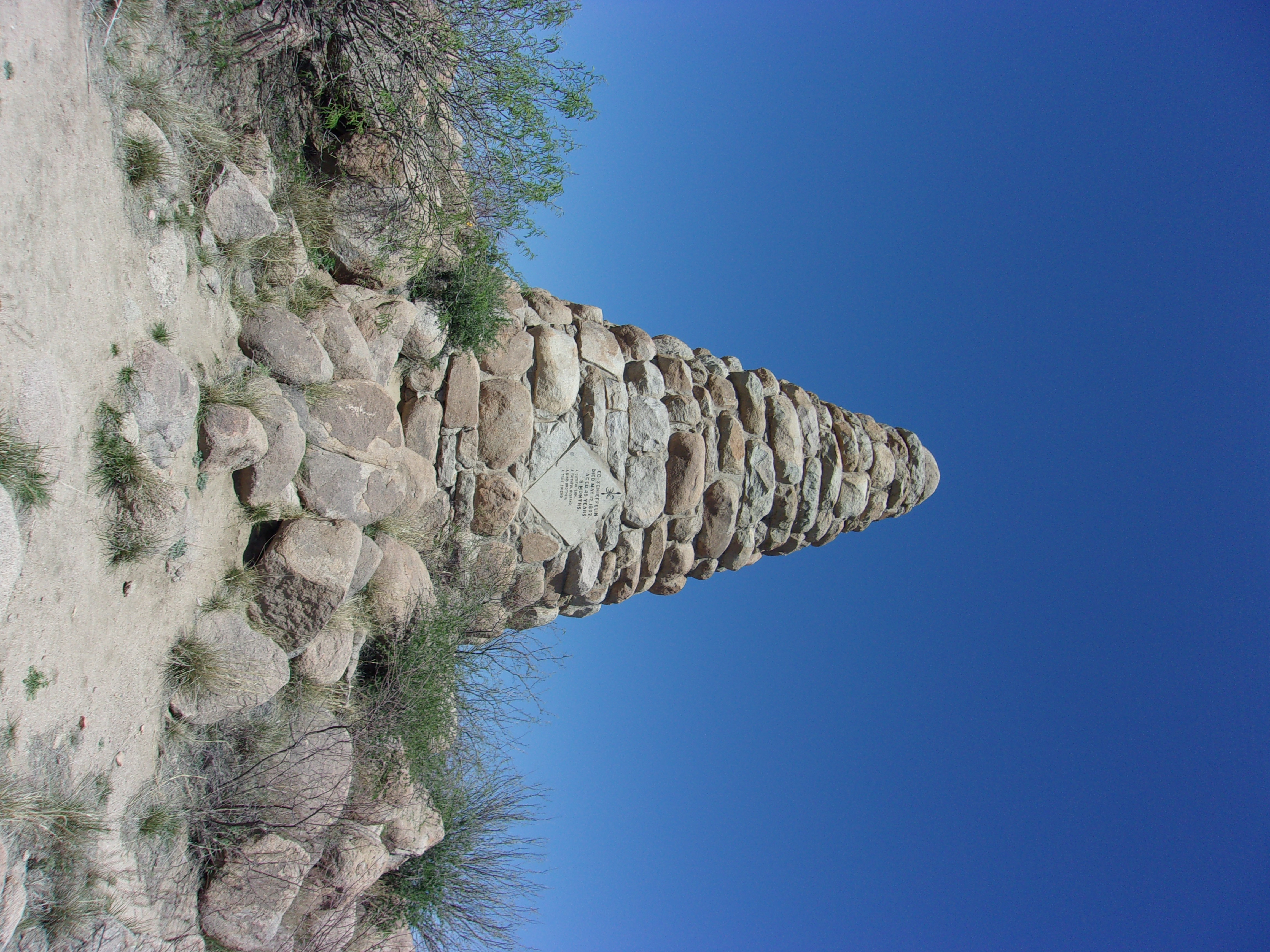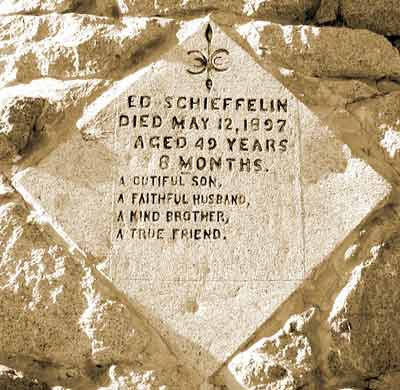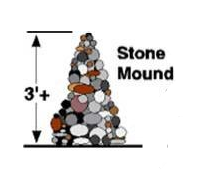Home > Tombstone Sites > Schieffelin Monument
Schieffelin Monument

Location:
895 W. Schieffelin Monument Road
(about 3 miles northwest of Tombstone)
Directions:
Take Allen Street west from Tombstone, it will curve to the right in 1.5 miles and become West Schieffelin Monument Road. In another 1.5 miles the Monument will be on the right -- it literally can't be missed.
GPS Coordinates: 30.730758 -110.103386
Hours: Daily 8:00 am to 5:00 pm
Admission Fee: None
Contact:
For more information about Schieffelin Monument contact the Tombstone Courthouse State Historic Park (Schieffelin Monument is an Annex to the Courthouse Park):
www.azstateparks.com/tombstone/
(520) 457-3311
Monday — Friday 9:00 am – 4:00 pm
Schieffelin Monument State Park
Schieffelin Monument is a part of the Arizona Sate Parks system.
It
is actually an Annex to the Tombstone Courthouse State Historic Park.
The Monument is open to visitors during daylight hours (8:00 am to 5:00 pm).
Ammenities include a trash can (please use it!), a picnic table, a short trail, and amazing views of the desert terrain where Ed Schieffelin first found treasure.
Schieffelin’s Discovery
Ed Schieffelin arrived in what is now Cochise County in March
1877 while working as a supplier for the Fort Huachuca cavalry.
He spent his free time prospecting for mineral deposits in the hills near the military base.
The area was constantly raided by bands of Apache Indians who would have killed him on sight.
Friends
at Fort Huachuca thought Schieffelin was crazy for risking his life
chasing treasure in Apache country, and one even famously told him that
all he would ever find would be his tombstone.
They were wrong.
In 1877 Schieffelin found silver in an outcropping of rock near where his monument now stands.
This would be the first of many strikes that Ed would make that led to the founding of the town named for his friend’s prophesy.
Prospector, Not Miner
While his prospecting claims made Ed a very rich man, he had no interest in mining, selling off shares of his claims to others to do the digging.
As he had said, years before, "I never wanted to be rich, I just wanted to get close to the earth and see mother nature's gold."
After selling off his final shares in the mines that had been developed from his discoveries, Ed moved on from “his Tombstone.”
He continued to prospect, including a trip to Alaska.
In 1897 Schieffelin bought land in Oregon where he searched for gold and silver.
On
May 12, 1897, after he had not shown up in town for supplies for
several days, a neighbor checked on him and found Schieffelin face down in his
miner's cabin.
The coroner ruled that he had died of a heart attack.
Ore samples found in his cabin with him were later assayed at more than $2,000 to the ton.
Shieffelin did not leave a map or directions pointing to the origins of his discovery, only a journal entry that read simply, “Struck it rich again, by God.”
Ed Schieffelin's Grave
Ed was initially buried near his cabin about 20 miles (32 km) east of Canyonville, OR.
Shortly after his burial it was learned that he had requested to be buried in Tombstone.
His
will left instructions, "It is my wish, if convenient, to be buried in
the dress of a prospector, my old pick and canteen with me, on top of
the granite hills, about three miles westerly from the City of
Tombstone, Arizona, and that a monument, such as prospectors build when
locating a mining claim, be built over my grave."
Schieffelin’s
body was removed to Arizona and he was interred about 3 miles (4.8 km)
northwest of Tombstone near the dry wash in which he originally found
silver ore.
He was buried as his will specified – in mining clothes, with pick, shovel, and his old canteen.
A prospector’s claim marker was erected over his grave, also as he had requested, with one difference.
Ed Schieffelin had thought that the grave marker would be a simple stone cairn that many prospectors used to mark their claims.
A Prospector's Claim Marker

photo courtesy The Tombstone Times
State and Federal laws require a discovery marker or monument on each mining claim filed.
A mining claim monument typically consists of a sturdy post or a solid rock pile, clearly marking the corners of a mining claim.
These monuments are crucial for defining the claim and making it readily identifiable.
Rules state that markers are to be “conspicuous and substantial.”
Key Requirements of Monuments
- Visibility – Monuments should be conspicuous and easily identifiable.
- Substantiality – They should be sturdy enough to withstand the elements and remain in place.
- Markings – Monuments must be clearly marked with the claim name and place designation.
- Location – Often a location monument is placed at the initial point of discovery with a notice of location posted.
Types of Monuments
One type of monument is the Rock Monument.
These involve constructing a pile of rocks, usually at least 3 feet high, to clearly mark the claim:

illustration courtesy of the Bureau of Land Management (BLM)
In essence, a mining claim monument is a physical marker that clearly defines a mining claim, making it identifiable and legally sound.
Schieffelin's Claim Marker
While Tombstone's citizens complied with his wishes, they did it with flair.
They erected a permanent rock marker that stands 25 feet ( 7.62 m) tall and can be seen for miles.
Ed Schieffelin’s Monument more than satisfies the requirements for a marker and permanently establishes his claim to fame.
Home > Tombstone Sites > Schieffelin Monument
COCHISE COUNTY
Coming Events
Rex Allen Days in Willcox - Oct. 2-5, 2025
Bisbee 1000 Great Stair Climb - Oct. 18, 2025
See More...